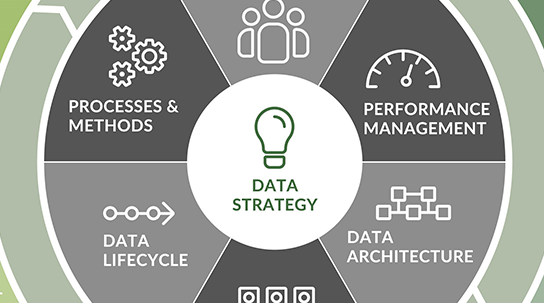AI technologies, particularly generative AI, are growing in power, use and utility. As tools become democratised and affordable there’s a need for good design principles, especially as generative AI is projected to generate US$4.4 trillion annually to the global economy.1
AI deployment is challenging for smaller organisations who want to utilise its benefit but can’t afford to develop complex frameworks for its responsible use. This is where a template for its proper deployment can help.
Yash Raj Shrestha, Assistant Professor at the Department of Information Systems at HEC Lausanne teamed up with researchers from ETH Zürich (Savindu Herath and Georg von Krogh) to develop a set of robust AI design principles, which can be utilised even by small to medium sized enterprises (SMEs). In particular, they collaborated with Swiss fashion company TBô in designing, deploying and evaluating AI in the company to augment corporate decision making processes.2
This led to significant improvements in customer retention, segmentation and targeting, as well as product design. AI augmented systems also enabled better use of data, allowing TBô employees to make more informed decisions and better understand their customers’ needs.
This Swiss academic-industry collaboration shows the potential of AI-augmented decision making systems in global ecommerce. This is a positive story for SMEs since the benefits of AI have been thought to lie predominantly with big Silicon Valley companies.
“The vast majority of SMEs do not have access many technical people so having a simple framework that can be used with AI is essential,“ explains Allan Perrottet, co-founder of TBô.
“What this project taught us is that the human factor that is very important when it comes to AI delivery, particularly around data use and the need to clean and prepare data on a daily basis. If businesses are to use their data effectively they need to ensure it’s labelled correctly.”
Even though AI is more affordable, the change management also involved with its deployment can still be costly. This involves recalibrating how organisations make decisions, how products are delivered, and evolving the business so that it is more data-driven.
Organisations cannot automate everything with AI, human-in-the-loop oversight is also crucial to make sense of AI output. Investment in AI is not just a one-off, upfront cost. It requires continual input to go through learning cycles, prove that it works, deploying an iterative process to fine-tune its results. AI is not a magic bullet, requiring patience, time and effort. It also needs leadership buy-in and in-house champions to spearhead its success.
The effective deployment of AI by Swiss retailer TBô shows that with the right design principles3 many more SMEs can utilise this tech.
“There are countless posts on LinkedIn, ‘how-to’ advice, opinions and online guides on AI deployment. What sets our research apart is that it’s scientific and rigorous in its approach. It also brings together industry and academia together in a unique collaboration,” explains Yash.
“Much more of this is needed if we’re to promote best practices, ethical AI, bias reduction and inclusivity. If we want AI to be deployed responsibly then its design principles must be decided upon in partnership with civil society and academics, not just commercial enterprise, since it affects us all.”
References:
- The economic potential of generative AI: The next productivity frontier, McKinsey, 14 Jun, 2023. ↩︎
- Design principles for artificial intelligence-augmented decision making: An action design research study, Savindu Herath Pathirannehelage, Yash Raj Shrestha & Georg von Krogh, European Journal of Information Systems, 20Mar 2024 ↩︎
- Simplified table from Design principles for artificial intelligence-augmented decision making: An action design research study. ↩︎
| Design principle | Design goals | Mechanisms to achieve goals |
| 1. Align business model and organisational resources | 1. Align AI system with the business model 2. Align AI system with organisational resources | Formulate an actionable strategic roadmap |
2. Design for synergy in input, model, and output to ensure business value | 1. Overcome data constraints 2. Make AI outcomes accurate and understandable 3. Demonstrate value for business | 1. Find relevant data for business problems 2a. Pick the right ML performance metric to optimise 2b. Try models and prioritise according to performance metric 2c. Make visualisations and feature importance 3. Develop the prototype system and follow an evaluation |
| 3. Design for ethical AI governance frameworks | 1. Ensure ethical use / use of data 2. Establish trust and engagement with customers and users | 1a. Adopt extant regulatory guidelines 1b. Establish an AI auditing and governance framework 2. Develop own AI guiding principles consistent with customer and user expectations |
| 4. Design for human involvement and engagement | 1. Integrate domain knowledge into design, operation, and evaluation 2. Enhance employees’ proficiency in working efficiently with the system | 1. Keep domain experts in the loop to actively integrate domain knowledge into system design 2. Facilitate user engagement and explainability of AI outcomes |
| 5. Design for continuous learning and adaptation | 1. Continuous improvement over new advancements in AI tech 2. Adaptability to changes in environment and decision-making | 1. Monitor model decay (e.g., through ML performance metrics) 2. Embrace an iterative process to overcome various challenges |
| 6. Design for open knowledge and resource utilisation | 1. Alleviate knowledge and resource constraints 2. Alleviate talent and domain expertise constraints | 1. Utilise community-developed open-source code for collaborative problem solving 2. Foster partnerships |
Picture: DC Studio | Freepik




